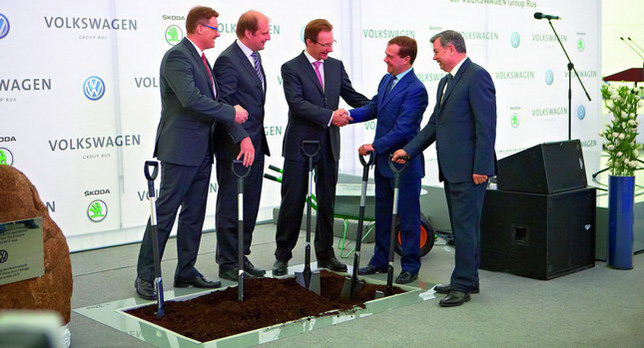The VW Group is already the largest foreign investor in Russia. Since 2006, it has invested nearly €1 billion (US$1.3 billion) in facilities and new models and just last week, it announced the allocation of a further €840 million (US$1 billion) in the next three years.
Nearly €250 million (US$326 million) will be spent building a brand-new, 30,000 square-meter engine plant next to its existing vehicle facility at Kaluga, which currently produces the VW Polo and Tiguan and the Skoda Fabia and Octavia models.
The official ceremony for laying the foundation stone took place on Wednesday and was attended by Russian Prime Minister Dmitry Medvedev, the Governor of Kaluga Oblast Anatoly Artamonov and Dr. Michael Macht, VW’s Member of the Board responsible for Group production.
The new engine plant will have an annual capacity of 150,000 units. VW’s powerplant that will be assembled there from early 2015, when the factory will become operational, will be a 1.6-liter gasoline engine from the EA 211 series.
“The cornerstones of our success in Russia are our Russian production facilities”, said Dr. Macht during the ceremony. “The new engine plant at Kaluga will add the highly advanced component technology required by our local production capacities, thus strengthening our position on the Russian market.”
With the addition of the Kaluga plant, at least 30 percent of vehicles manufactured in Russia will be equipped with locally built engines by 2016, meeting the targets set in the Decree 166 it signed with the Russian government in May 2011.
Currently, Russia is the VW Group’s sixth-largest market in the world. This year deliveries will exceed 315,000 vehicles, half of which made locally, marking an increase of 38 percent compared to 2011.
By Andrew Tsaousis
PHOTO GALLERY








